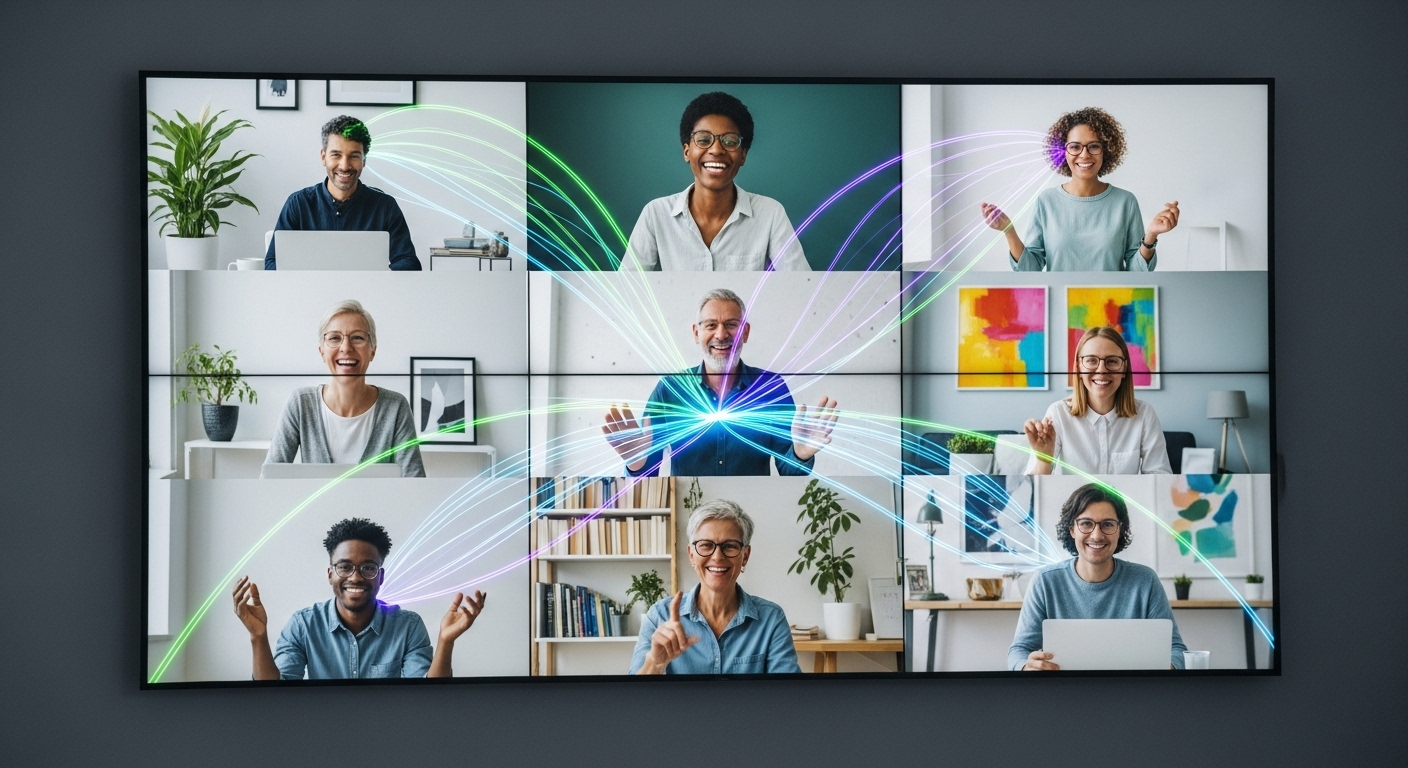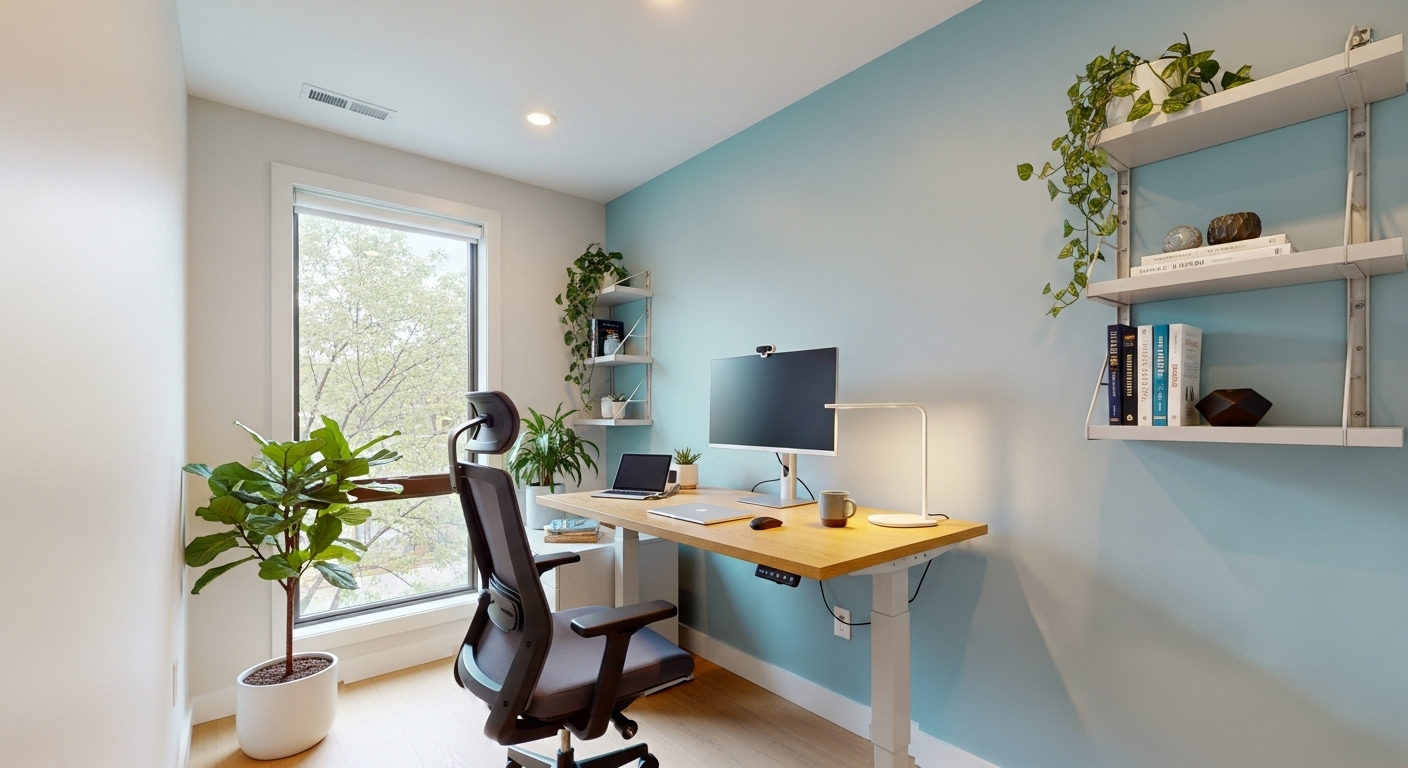The shift to remote work has redrawn the boundaries of our professional lives, offering unprecedented flexibility. Yet, this new freedom comes with a hidden cost: the erosion of the social fabric that once bound us together in physical offices. The spontaneous chats by the coffee machine, the shared lunches, and the subtle cues of in-person collaboration have been replaced by scheduled video calls and asynchronous messages. Recent search trends show a significant rise in queries related to remote work loneliness and career stagnation, indicating a widespread yearning for connection. This article tackles this challenge head-on. We will explore the concept of a ‘social fabric’ in the context of remote work—the intricate web of relationships, trust, and shared understanding that fuels both individual career growth and collective success. We will move beyond simple communication tips to provide a strategic framework for intentionally weaving a strong, resilient, and supportive professional community, no matter where you log in from. This guide offers actionable strategies for building trust, finding mentors, and engineering the serendipitous connections that define a thriving work life.
Redefining the “Water Cooler”: The Art of Intentional Connection
In a traditional office, the water cooler, the coffee station, or the hallway served as hubs for serendipitous interaction. These unplanned encounters were critical for building rapport, sharing information informally, and fostering a sense of belonging. In a remote setting, these moments don’t happen by accident; they must be engineered with intention. The core challenge is to recreate the psychological safety and casual atmosphere of these spaces in a digital environment. This requires a conscious shift from a purely task-oriented mindset to one that prioritizes relationship-building. Teams can implement ‘virtual water coolers’ through dedicated, non-work-related channels on platforms like Slack or Teams, where employees can share hobbies, celebrate small wins, or simply chat. Another powerful technique is scheduling short, optional ‘coffee chats’ where the only agenda is to connect on a human level. These can be one-on-one or in small groups, using random pairings to encourage interaction between colleagues who don’t typically work together. It’s also crucial to set the right tone from the top. When leaders actively participate in and encourage these non-work interactions, it signals that building social capital is a valued part of the company culture, not just a frivolous distraction. The goal is not to replicate the physical office but to build a new set of rituals that serve the same fundamental human need for connection and community.
Building Trust Through Pixels: The Currency of Digital Reliability
Trust is the bedrock of any successful team, and it’s notoriously harder to build and maintain without the nuances of in-person interaction. In a remote environment, trust is forged through a different currency: digital reliability. This concept goes beyond simply meeting deadlines. It’s about consistent, predictable, and transparent communication. It means being fully present in virtual meetings—cameras on when appropriate, actively listening, and contributing thoughtfully. It’s about responding to messages within a reasonable timeframe, not because you’re being monitored, but as a sign of respect for your colleagues’ time. A key component of digital reliability is proactive communication. For instance, if you’re going to miss a deadline, communicate it early and offer a solution. If you’re blocked on a task, don’t wait for someone to ask; reach out for help. This transparency builds a reputation for accountability. As Brené Brown, a renowned researcher on vulnerability and trust, states,
“Trust is a product of vulnerability that grows over time and requires work, attention, and full engagement.”
This is doubly true in a remote context. Sharing your thought process, admitting when you don’t know something, and being open about your workload all contribute to a culture where colleagues feel they can rely on one another, fostering the psychological safety needed for high-impact collaboration.
Virtual Mentorship and Sponsorship: Charting Career Growth from Home
One of the most significant anxieties for remote professionals is the fear of being ‘out of sight, out of mind,’ particularly when it comes to career progression. Without the organic opportunities to connect with senior leaders, finding mentors and sponsors can feel like an insurmountable challenge. In a remote world, seeking this guidance requires proactive effort and strategic positioning. Individuals must become adept at identifying potential mentors within their organization or industry and initiating contact. This can start with a well-crafted message expressing admiration for their work and a specific, low-commitment request, such as a 15-minute virtual coffee to discuss their career path. The key is to be prepared, respectful of their time, and clear about what you hope to learn. For sponsorship—where a senior leader actively advocates for your advancement—the path is through visibility. This means consistently delivering high-quality work and, just as importantly, ensuring that work is seen. Take ownership of projects, volunteer for challenging assignments, and make a habit of presenting your team’s successes in wider company forums. Building relationships with your manager’s peers and other departmental leaders through cross-functional projects is also crucial. Organizations, in turn, must formalize the process by creating structured mentorship programs that pair junior and senior employees, ensuring that access to career guidance is equitable and not left to chance.
The Rise of Digital Communities: Finding Your Professional Tribe Online
While internal company connections are vital, the modern remote professional must also look externally to build a robust support network. The isolation of working from home has fueled the explosive growth of digital communities, providing a new venue for finding one’s ‘professional tribe.’ These communities, often hosted on platforms like Slack, Discord, LinkedIn Groups, or specialized forums, offer a space to connect with peers who face similar challenges, share industry-specific knowledge, and uncover new opportunities. Unlike the formal networking of yesteryear, these groups thrive on mutual support and authentic interaction. Actively participating in a relevant community can provide immense value. It’s a place to ask for advice on a tricky problem, get feedback on a new idea, or simply vent about the unique struggles of remote work life with people who truly understand. To get the most out of these communities, it’s important to be a giver, not just a taker. Answer questions, share valuable resources, and offer encouragement to others. This builds your reputation and social capital within the group, making it more likely that others will help you when you need it. These external networks serve as a critical supplement to your internal one, providing diverse perspectives, fostering continuous learning, and creating a career safety net that extends beyond your current employer.
Combating Digital Fatigue: Strategies for Sustainable Remote Well-being
The very tools that enable remote work can also be its greatest liability, leading to digital fatigue, burnout, and a pervasive sense of being ‘always on.’ A sustainable remote career depends on creating firm boundaries between work and life. This starts with defining clear work hours and, more importantly, communicating them to your team. When your workday is over, log off completely. Disable notifications on your phone and resist the urge to check email ‘just one more time.’ Another crucial strategy is managing ‘Zoom fatigue.’ Not every conversation needs to be a video call. Encourage the use of phone calls or even voice notes for discussions that don’t require screen sharing, giving yourself a break from constant face-to-face digital interaction. It’s also perfectly acceptable to have ‘camera-off’ periods during long meetings. Building physical movement into your day is non-negotiable. Schedule short breaks to walk around, stretch, and get away from your screen. This practice, often referred to as the Pomodoro Technique, can significantly improve focus and reduce mental strain. A 2021 study by Microsoft’s Human Factors Lab found that back-to-back virtual meetings lead to spikes in stress; even short breaks in between can allow the brain to ‘reset,’ reducing the buildup of fatigue and improving engagement throughout the day.
From Colleague to Collaborator: Engineering Serendipity in Virtual Teams
How do teams capture the innovative spark that often ignites during a spontaneous whiteboard session or a casual problem-solving chat? Engineering this collaborative serendipity in a remote setup requires the right blend of culture and technology. It’s about creating environments where ideas can collide unexpectedly. Digital whiteboarding tools like Miro or Mural are essential, but their effectiveness depends on how they’re used. Instead of only using them for structured meetings, teams can maintain persistent, ‘always-on’ boards for specific projects. Team members can drop in anytime to add ideas, comment on others’ contributions, or simply see how a concept is evolving. This mimics the dynamic of a physical project room. Another powerful technique is to hold open, unstructured ‘office hours’ or ‘ideation jams.’ These are scheduled blocks of time where team members are on a voice or video call together, working on their individual tasks but available to instantly collaborate or brainstorm if a question or idea arises. This creates a low-friction environment for spontaneous interaction, much like sitting together in an open-plan office. The goal is to lower the barrier to collaboration, making it as easy to ask a quick question or float a half-formed idea to the group as it would be to turn to the person at the next desk.
Conclusion: Weaving a Resilient and Connected Future
The future of work is not just remote; it is connected. As we’ve explored, the flexibility of a location-independent career is only sustainable when it’s built upon a strong social fabric. This requires a fundamental shift in mindset, from passively hoping for connection to actively and intentionally weaving it into our daily routines. It means transforming digital reliability into a form of currency that builds trust, proactively seeking out mentors in a crowded virtual world, and finding your professional tribe in vibrant online communities. It demands that we engineer serendipity with clever uses of technology and protect our well-being by setting firm digital boundaries. Building this social fabric is not the sole responsibility of the individual; it requires organizational commitment to foster a culture where connection is valued as highly as productivity. For the modern professional, mastering these skills is no longer optional. The ability to build relationships, cultivate community, and maintain a sense of belonging from afar is the new cornerstone of a successful and fulfilling remote work life. By consciously investing in our connections, we can ensure that our careers don’t just survive in the remote era—they thrive.





